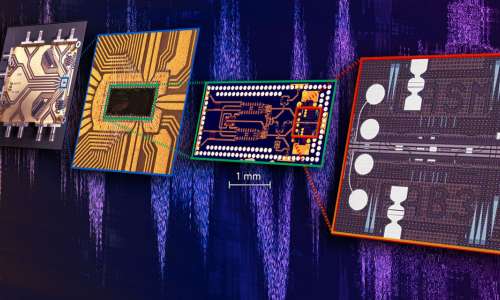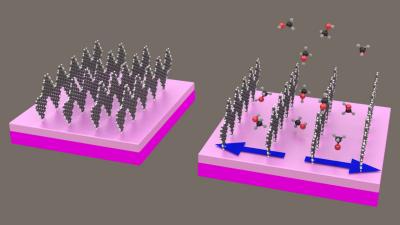_ Department 🔬 laboratory (propagation and expansion of nanochips)
Review of nano (core chip) sensors Nano bio core electric sensor
Researcher and author: Dr. ( Afshin Rashid)
Note: Nano (core chip) sensors Nano bio core electric sensor with the help of specific interactions between the molecules on the surface of the nanoparticles and the molecules on the diagnostic sensors, minimize the non-target interactions towards the non-diagnostic particles of the nano sensors. At least it delivers.
NanoBioSensor is focused on the development of innovative technologies that have the potential to make significant contributions to the fields of disease diagnosis, characterization of nano and biological materials, and environmental monitoring. These technologies are formed in the form of nanometer engineering sensing platforms such as platforms based on nanowires, nanopops, CNTs, nanoribbons, nanobiochip sensors, etc. Various types of these nanosystems are explored based on the structures of nanosensors, such as conductive platforms. Surface plasmon resonance detection is a general-purpose sensor chip for interaction analysis that includes a variety of biomolecules such as small organic molecules, proteins, lipids, carbohydrates, and nucleic acids. The design of the nano-biochip sensor allows detailed quantitative studies of these reagents to yield data such as interaction kinetics, affinity, interaction, concentration, and binding ratios. This ligand is covalently bound to the surface of the Nano bio core sensor through the carboxyl, zinc, and dextran parts.
In this way, in the nano structure (core chip) of the sensors, Nano bio core sensor, which crystals convert mechanical energy into electricity, the nano sensor that was created for this purpose includes a nanochip that is assembled with zinc oxide molecules on top of each other and It creates millions of nanowires. Piezoelectric energy plays an important role in the detection process. When some materials, such as zinc oxide wires, are compressed or pressed, they develop an electrical charge in response to applied mechanical pressure. The slightest disturbance in the structure of the nanowires on the chip leads to piezoelectric energy. This is then converted into electrical energy and amplified to produce a voltage.

Intense motion of surface plasmon resonance in nano (core chip) is used to move objects at very high speed. These movements disrupt the nanowires to produce an electronic signal due to the piezoelectric effect. This nanochip uses a flexible substrate that generates electricity with the movement of a person's body. In order to be able to use the nanochip to detect the specific and non-specific binding assessment of nanotherapy , a biological flavor is added to the Nano bio core sensor by adding a bait that attracts specific bacteria .
Conclusion :
Nano (core chip) sensors Nano bio core electric sensor with the help of specific interactions between the molecules on the surface of the nanoparticles and the molecules of the diagnostic sensors minimizes the non-target interactions towards the non-diagnostic particles of the nano sensors. delivered
Researcher and author: Dr. ( Afshin Rashid)
Specialized doctorate in nano-microelectronics




